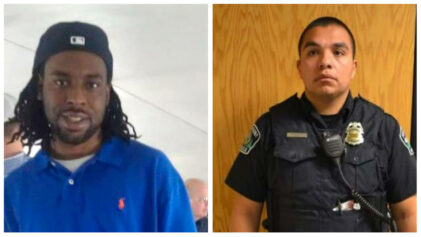
FILE – This undated photo shows Emmett Louis Till, a black 14-year-old Chicago boy, who was kidnapped, tortured and murdered in 1955 after he allegedly whistled at a white woman in Mississippi. (AP Photo, File)
NEW YORK (AP) — Gruesome images of a lynched Emmett Till were seared into the minds of many black Americans in 1955 and helped lead to the modern civil rights movement. But few whites knew of their existence at the time.
That reality is at the top of NBC’s two-hour documentary about how images propelled the civil rights effort. The film premieres Saturday at 8 p.m. ET as the 50th anniversary of the Rev. Martin Luther King’s assassination approaches.
Till was the 14-year-old black Chicago boy visiting relatives in Mississippi, killed after a white grocery store clerk claimed he treated her rudely. Decades later, she recanted her story. That was far too late to save Till from being bludgeoned, shot in the head and thrown into a river. Two men were acquitted of the crime, even though they later admitted to it.
Given a casket nailed shut, Till’s mother ordered it open and Jet magazine took pictures of his horrible maimed head, beaten beyond recognition.
“For a mainstream, news audience, my guess is a large number of people knew his name, but didn’t really know what happened, which is the best and highest calling for a documentary like this,” said NBC News Chairman Andrew Lack. “Seeing these pictures underscores what happened, what really happened, why the murder of Emmett Till was such a shocking and important event in the civil rights movement.”
There’s no evidence that NBC ever showed the picture of Till’s body until a “Today” show story on the anniversary of his death in 1985, the network said. NBC wasn’t alone among the mainstream media.
“It was a different America,” Lack said.
As if to make amends, the documentary shows the image of a murdered Till seven times. NBC compared Mamie Till’s insistence that the brutal truth of what happened to her son be made visible to actions 2016 by the girlfriend of Philando Castile, who streamed the aftermath of his shooting by a police officer outside of St. Paul, Minnesota where he had been pulled over for a busted light.
Mamie Till went to Jet because, at the time, it was the top news source for black America, said MSNBC’s Joy Reid, who participated in the documentary. “If you were a mother in Mamie Till’s position, you wouldn’t go to NBC or CBS or even The New York Times,” she said.
The pictures “took the issue of lynching away from the grainy photographs of a body hanging in the woods,” she said. The anniversary of Till’s death was later chosen as the date of King’s March on Washington, she noted.
“The civil rights movement never forgot Emmett Till,” Reid said. “He was to that movement what Trayvon Martin was to Black Lives Matter, a symbol that remained incredibly potent.”
NBC’s documentary shows how King innately understood the power of images beamed by the still-infant medium of television. A peaceful march or sit-in could draw yawns from a general public, yet a march of well-dressed children set upon by police with dogs and fire hoses produced pictures that made many Americans recoil when they saw them on the evening news.
Repeatedly, King could count on racists to reveal themselves and provide the pictures he needed to give the movement momentum. Many demonstrations were planned before noon to give enough time for film to be delivered to New York to be shown on the network evening news.
Noted civil rights icon John Lewis is quoted in the documentary as saying, “without television, the civil rights movement would have been like a bird without wings.” The movement changed television, too: evening news programs expanded from 15 minutes a day to half hour to keep up with the news.
Lack said he also hoped the documentary would give attention to some notable black journalists from the time. Two examples: Ernest Withers, who took the picture of a man who stood in the courtroom and pointed to Till’s murderers during their trial, and L. Alex Wilson, who followed black students integrating a high school in Little Rock, Arkansas, and continued walking despite being beaten by a crowd of angry whites.
The documentary was initially made for MSNBC but, midstream, Lack said he felt compelled to request a prime-time window on the network. Once common, documentaries are now such a rarity on network television that NBC said it hasn’t aired a two-hour film like this since 2004.
It is being repeated on MSNBC Sunday at 9 p.m. ET.


